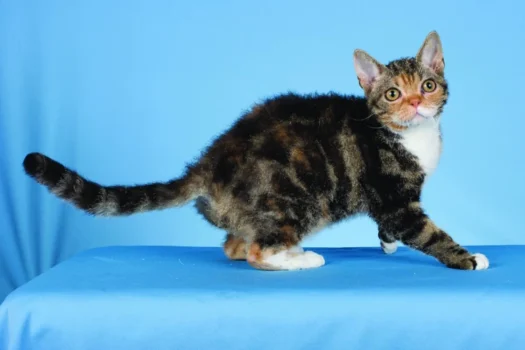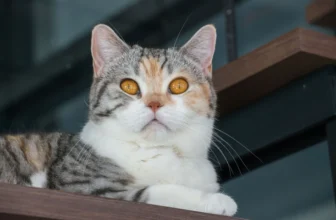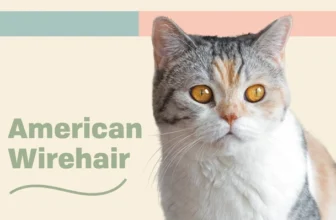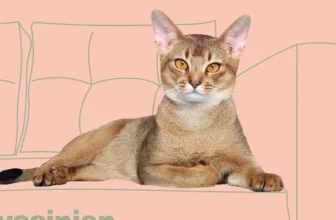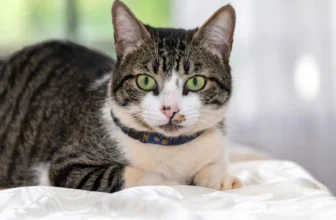Feeding your beloved American Wirehair can be a daunting task, especially with so many different feeding options available. As a cat owner, you want to make sure that your furry friend is getting all the nutrients they need to live a healthy and happy life. The truth is, each feeding method has its own set of pros and cons, making it challenging to pick the right one for your feline. In this article, we’ll delve into the details of each feeding method and provide you with the necessary information to make an informed decision when it comes to feeding your American Wirehair. So, let’s dive right in!
Dry Food
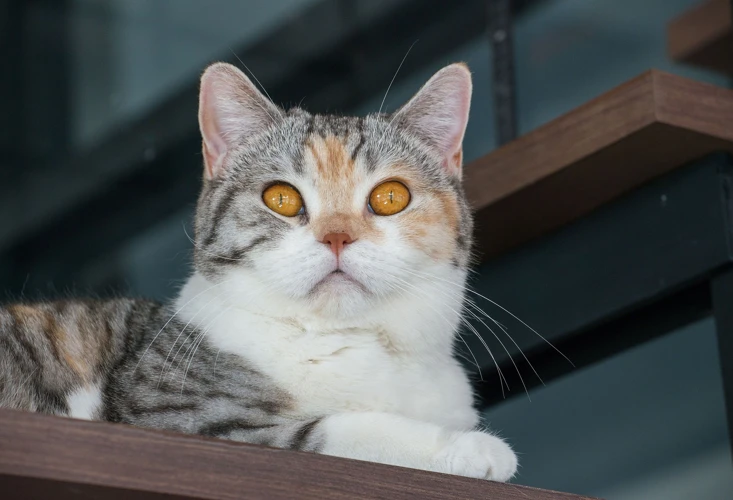
When it comes to feeding your American Wirehair, one of the most common options is dry food. Often referred to as kibble, dry food is a convenient and affordable option that provides a variety of benefits for your feline friend. However, there are also some drawbacks to consider. In this section, we will explore the pros and cons of feeding your American Wirehair dry food. For more information on related topics, check out our guide to balancing your American Wirehair’s diet for optimal health.
Pros
One of the pros of feeding American Wirehair cats dry food is that it is convenient and easy to store. Since it doesn’t require refrigeration, it can be left out in a bowl for your cat to graze on throughout the day. This is especially beneficial for owners who work long hours and cannot be home to feed their cat at specific times. Additionally, dry food has a longer shelf life than wet or raw food, making it a practical option for busy pet owners.
Another advantage of feeding your American Wirehair dry food is that it can help with dental health. Dry food is crunchy and can help reduce the buildup of plaque and tartar on your cat’s teeth. This can ultimately prevent dental issues such as gum disease and tooth decay.
Finally, dry food tends to be more affordable than other types of cat food, making it an attractive option for budget-conscious pet owners.
It’s important to note, however, that there are some downsides to feeding your American Wirehair dry food. One concern is that it may not provide enough moisture for your cat, leading to dehydration and other health issues. Additionally, some brands of dry cat food can be high in carbohydrates and fillers, which can contribute to weight gain and other health problems.
To ensure that your cat is getting the proper nutrition they need while eating dry food, it’s important to choose a high-quality brand that is low in carbohydrates and contains plenty of protein and other essential nutrients. You may also want to consider supplementing your cat’s dry food with wet food or providing them with ample opportunities to drink water.
Cons
When it comes to dry food, there are some cons to consider as well. One of the biggest concerns is dehydration. Because dry food has a low moisture content, it can be difficult for cats to get enough water from their diet. This can lead to urinary tract problems and other health issues. Additionally, some dry foods can be high in carbohydrates and low in protein, which may not meet the nutritional needs of your American Wirehair. Some commercial dry foods may also contain fillers or artificial preservatives that can be harmful to your cat’s health. In fact, research has linked some commercial cat foods to a higher risk of obesity, diabetes, and other health problems. It’s important to choose a high-quality dry food that is specially formulated for cats, with real meat as the first ingredient. Some of the best dry foods for American Wirehairs also contain added nutrients to support your cat’s overall health and well-being. It’s also important to provide plenty of fresh water alongside dry food to help your cat stay hydrated.
| Cons of Dry Food: |
|
If you’re unsure about feeding your American Wirehair dry food, consider consulting with a veterinarian or a feline nutritionist. They can help you choose the best dry food for your cat’s unique needs and provide guidance on portion sizes and feeding schedules. Alternatively, you may want to consider a wet food or raw food diet, which can be more beneficial for cats in some cases.
Wet Food
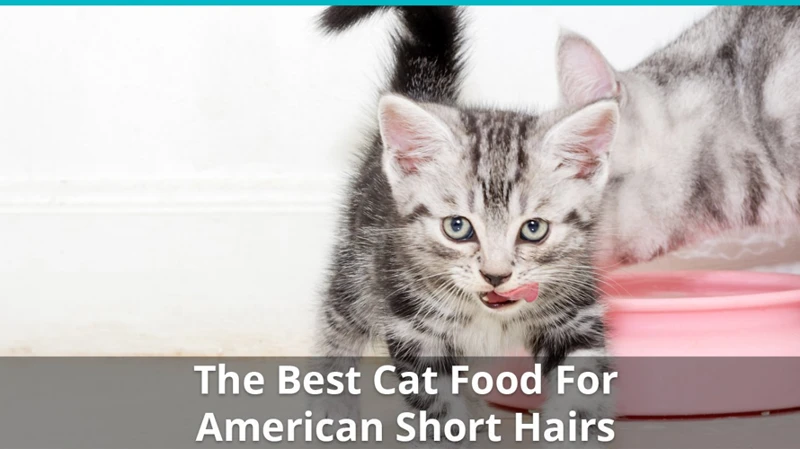
When it comes to feeding your American Wirehair, wet food is a popular option for many cat owners. This type of food is characterized by its high moisture content and soft texture, which can be easier for cats to eat, especially for those with dental issues. While wet food may have certain benefits over other types of food, it’s important to consider both the pros and cons when making a decision about your cat’s dietary needs. Let’s explore the advantages and disadvantages of feeding your American Wirehair wet food.
Pros
There are several pros associated with different feeding methods for American Wirehair cats. One of the most popular options is dry food, which can provide a range of benefits for both cats and their owners.
Firstly, dry food is generally more affordable than wet food or raw diets. This makes it a good option for pet owners who want to provide their cats with high-quality nutrition without breaking the bank. Additionally, dry food has a long shelf life and is easy to store, making it a convenient choice for busy households.
Another benefit of dry food is that it can help promote oral health in American Wirehair cats. Many dry food brands are designed to help clean teeth and remove plaque, which can reduce the risk of dental diseases like gingivitis and periodontitis. This is particularly important for older cats, who may be more prone to dental problems.
However, it is important to choose a high-quality dry food that is rich in protein and other essential nutrients. Some commercial brands contain fillers and preservatives that can be harmful to cats over time. Additionally, some cats may not enjoy the taste or texture of dry food, so it may take some trial and error to find a brand that your American Wirehair likes.
Dry food is a convenient and affordable option for feeding your American Wirehair. When selecting a brand, be sure to look for nutrient-rich options that will support your cat’s overall health and wellbeing.
Cons
When it comes to feeding American Wirehair cats, dry food has its fair share of drawbacks. One of the most significant cons is the low moisture content, which can lead to dehydration and urinary tract problems. Additionally, many commercial dry food options contain large amounts of carbohydrates and fillers, which are not beneficial for a cat’s overall health.
Another drawback of dry food is that it may not be as appealing to some cats as wet food or raw diets. Some cats may find the dry texture unappetizing or challenging to chew, leading to inadequate food intake, and in extreme cases, malnourishment. Because of its high caloric density, it can be effortless for cats to overeat dry food, leading to weight gain and obesity.
There are concerns about the quality of some commercial dry food brands. Some may contain low-quality ingredients, excessive levels of preservatives, and artificial additives such as flavors and colors, which can be harmful to cats’ health. It’s recommended to check the food label carefully and choose high-quality commercial dry food brands, or consider preparing homemade meals for your American Wirehair.
Raw vs. Commercial Cat Food for American Wirehair.
Raw Diets
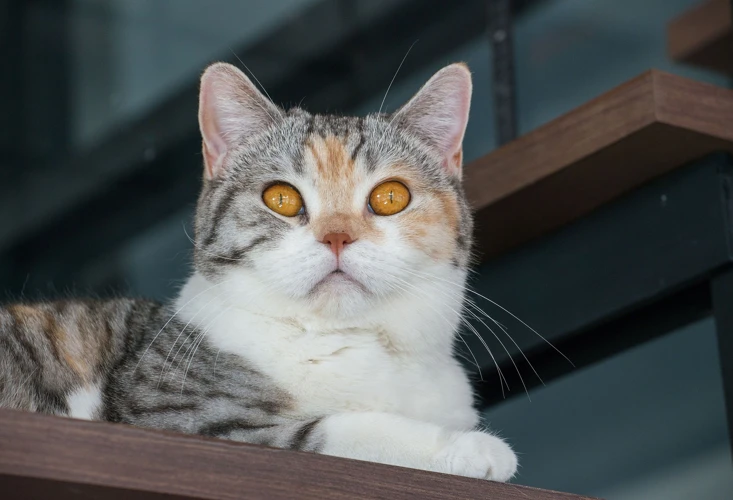
When it comes to feeding your American Wirehair, there are plenty of different options available. One such option is a raw diet, which involves feeding your feline companion uncooked meat and other raw ingredients. While this approach has its supporters, there are also several potential downsides to consider. In this section, we’ll explore the pros and cons of a raw food diet for your American Wirehair, as well as some important considerations to keep in mind if you’re thinking about switching to this type of feeding regimen.
Pros
When it comes to feeding your American Wirehair, using dry food as their main source of nutrition has some advantages. First, dry food tends to be more convenient and easier to store than wet food or raw diets. You can leave it out for your cat to nibble on throughout the day without worrying about it spoiling. Additionally, dry food is usually less expensive than other types of food, making it an affordable option for many pet owners.
Another advantage of dry food is that it can help with dental health. The crunchy texture of the kibble can help to scrape away plaque and tartar from your cat’s teeth, reducing the risk of dental problems down the line. This is an important consideration, as dental disease is a common health issue for cats of all breeds.
However, it’s important to keep in mind that not all dry foods are created equal. Some cheaper brands may be high in carbohydrates and fillers, which can lead to weight gain and other health problems. When selecting a dry food for your American Wirehair, look for options that are high in protein and low in carbohydrates to ensure they’re getting the nutrients they need to stay healthy and energetic. You can find more information about the role of protein in your cat’s diet on our article about protein in American Wirehair diets.
Here’s a comparison table summarizing the pros of dry food:
| Pros of Dry Food |
|---|
| Convenient and easy to store |
| Less expensive than wet food or raw diets |
| Can help with dental health |
| Good option for free-feeding |
Dry food can be a great choice for feeding your American Wirehair, as long as you’re careful to select a high-quality, protein-rich brand. Be mindful of portion sizes and pay attention to your cat’s weight and overall health. Making smart nutrition choices is an important part of keeping your Wirehair happy and healthy. To avoid common feeding mistakes, look at our article on feeding mistakes to avoid with your American Wirehair.
Cons
Dry food, also known as kibble, is a popular option for many American Wirehair cat owners due to its convenience and affordability. However, there are also several cons to consider when feeding your cat dry food.
One of the biggest drawbacks of dry food is its low moisture content. This can lead to dehydration and urinary tract issues, especially if your cat doesn’t drink enough water. Additionally, dry food tends to be more processed and contain more preservatives than other types of cat food, which can be detrimental to your cat’s health in the long run.
Cons of feeding your American Wirehair dry food:
| Low moisture content can lead to dehydration and urinary tract issues |
| Processed and may contain preservatives |
| May contribute to dental health issues |
| May contribute to obesity |
It’s important to note that not all dry foods are created equal. Look for high-quality options with protein as the main ingredient and minimal fillers. Also, be sure to provide your cat with plenty of fresh water and consider supplementing their diet with wet food or raw food to help combat the cons of dry food.
Home-Cooked Meals

Making your American Wirehair’s meals from scratch using wholesome ingredients is a tempting idea for many pet owners. Home-cooked meals can provide greater control over the quality of ingredients and nutrient balance of your cat’s diet. However, before diving into the world of DIY pet food, there are some important factors to consider. It’s essential to ensure that your cat’s diet is nutritionally complete and balanced, and that any homemade recipes take into account specific health conditions and dietary requirements. By doing so, you can help maintain your pet’s health and prevent potential health issues linked to diet. Let’s explore the potential benefits and drawbacks of home-cooked meals for American Wirehairs. For more information about nutrition and skin & coat health of American Wirehair cats, check out our article on nutrition for American Wirehair skin and coat health.
Pros
Dry food is a popular feeding method for American Wirehair cats, and for a number of reasons. Here are some of the pros of feeding your cat dry food:
- Convenient: One of the biggest advantages of feeding your cat dry food is that it is extremely convenient. It can be left out all day without spoiling and doesn’t require refrigeration like wet food or raw diets. Additionally, it can be purchased in larger quantities and stored for longer periods of time, making it a cost-effective option.
- Oral Health: Dry food can help keep your cat’s teeth clean and healthy by promoting chewing and reducing the buildup of plaque. Some dry foods are also formulated with dental benefits in mind, such as added enzymes or special kibble shapes and textures that aid in dental hygiene.
- Variety: There are many different varieties of dry food available, ranging from standard kibble to specialized formulas for specific health concerns or life stages. This allows you to choose a food that is most appropriate for your cat’s individual needs.
- Weight Management: Some dry foods are formulated specifically for weight management, making it easier to keep your cat at a healthy weight and prevent obesity. These foods typically have fewer calories and more fiber than standard kibble.
While dry food does offer a number of advantages, there are also some potential downsides to consider. Here are some of the cons of feeding your cat dry food:
- Dehydration: Dry food typically has a lower moisture content than wet food, which can lead to dehydration in some cats. This is particularly true for cats who do not drink enough water on their own. It is important to ensure your cat has access to fresh, clean water at all times, especially when feeding dry food.
- Quality: The quality of dry food can vary widely depending on the brand and ingredients. Some cheaper options may be filled with fillers or artificial additives that can be harmful to your cat’s health in the long run.
- Palatability: Some cats simply do not enjoy the taste or texture of dry food, which can make mealtime a challenge. If your cat is a picky eater, you may need to experiment with different brands or varieties to find one that they enjoy.
- Digestive Issues: Some cats may experience digestive issues, such as constipation or urinary tract problems, when eating dry food exclusively. This can be particularly true for cats that are prone to these issues or older cats that have trouble digesting certain ingredients.
Cons
When it comes to feeding your American Wirehair cat, dry food is a popular choice among pet owners. However, it is important to weigh the pros and cons before deciding if it is the best option for your furry friend. Here are some cons to consider:
| Cons |
|
While dry food may be convenient and cost-effective for some pet owners, it is important to consider your cat’s specific needs and health concerns before making a decision. Consulting with your veterinarian can also provide helpful guidance in determining the best feeding method for your American Wirehair.
Feeding Your American Wirehair: Key Considerations
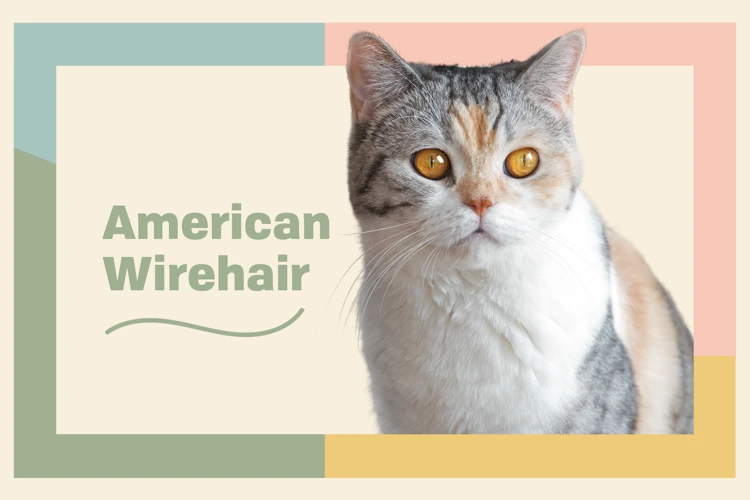
When it comes to feeding your American Wirehair cat, there are several key considerations that must be taken into account in order to ensure their health and wellbeing. Age, activity level, and health conditions all play a critical role in determining the most appropriate feeding method for your feline friend. By taking these factors into consideration and tailoring their diet accordingly, you can help support your cat’s overall health and happiness. Let’s explore these key considerations in more detail.
Age
One of the key considerations when feeding your American Wirehair cat is their age. Different age brackets have varying nutritional requirements that should be considered to ensure their optimal health. Here are some important guidelines to keep in mind:
- Kitten: Kittens require a higher concentration of protein and fat in their diet to support their rapid growth and development. Make sure to choose food specifically formulated for kittens, and feed them small portions throughout the day as they have small stomachs.
- Adult: Adult American Wirehair cats require a more balanced diet that includes sufficient protein, vitamins, and minerals to maintain their body weight and keep them healthy. Choose food that is formulated for adult cats and monitor their portion sizes to avoid overfeeding, which can cause obesity.
- Senior: As your American Wirehair cat enters their senior years, their metabolism changes and their tastes may also differ. Senior cats may require more protein and fiber to support their aging organs and digestive system. Choose food that is specially formulated for senior cats and keep a close eye on their weight and overall health.
It’s also important to note that nutritional requirements may also change during certain life stages, such as pregnancy or lactation. In such cases, it’s best to consult with a veterinarian to ensure that your American Wirehair cat is receiving the appropriate nutrients for their unique needs.
Activity Level
The activity level of your American Wirehair is an important factor to consider when deciding on a feeding method. Cats with higher activity levels will require more calories and nutrients to support their energy needs. Conversely, cats with lower activity levels will require fewer calories to prevent weight gain.
Here are some things to keep in mind when feeding your American Wirehair based on their activity level:
- Active cats: If your cat is particularly active, such as if they enjoy playing or have a lot of outdoor time, they may benefit from a diet that is higher in protein and fat to support their energy needs. Consider feeding a high-quality dry or wet food that is designed for active cats. Remember to monitor their weight to ensure they are not overeating.
- Sedentary cats: If your cat is less active, such as if they spend most of their time indoors sleeping, they may require fewer calories. In this case, consider a high-quality weight management food that contains lower levels of fat and calories. Additionally, encourage your cat to engage in some light exercise, such as playing with toys or chasing a laser pointer, to prevent them from becoming overweight.
Whatever your cat’s activity level, it is important to choose a feeding method that meets their specific needs and to monitor their weight and overall health regularly. By providing them with the appropriate balance of nutrients, you can help your American Wirehair lead a happy and healthy life.
Health Conditions
When it comes to feeding your American Wirehair, it’s essential to consider their health conditions. Different health issues may require specific dietary requirements or limitations. Here are some common health conditions that American Wirehairs may face and some tips to help you adjust their diet accordingly.
| Health Condition | Dietary Considerations |
|---|---|
| Obesity | Avoid feeding them high-calorie foods and limit their intake. Instead, opt for lean proteins and low-fat options. |
| Urinary Tract Issues | Choose food with a lower ash content to help prevent urinary crystals from forming. Wet food can also help keep your cat hydrated, which is essential for maintaining urinary tract health. |
| Diabetes | Feed your cat small, frequent meals throughout the day instead of a large meal. You should also choose food with a low carbohydrate content and high protein content. |
| Dental Issues | Choose food with crunchy textures or that promotes dental health, such as dental chews or treats. You can also try adding water to their dry food to make it easier to chew. |
| Allergies/Sensitivities | If your American Wirehair is allergic or sensitive to certain ingredients, avoid feeding them food that contains those allergens. You may need to consider a special diet, such as a hypoallergenic diet. |
| Kidney Disease | Choose food that is low in protein and phosphorus to help support kidney function. You should also ensure that your cat is adequately hydrated. |
It’s important to consult with your veterinarian if you suspect that your American Wirehair has any health issues. Your vet can provide you with more specific dietary recommendations for your cat’s condition. Additionally, regularly scheduled check-ups can help detect and address any health issues early on.
Common Feeding Issues and Solutions
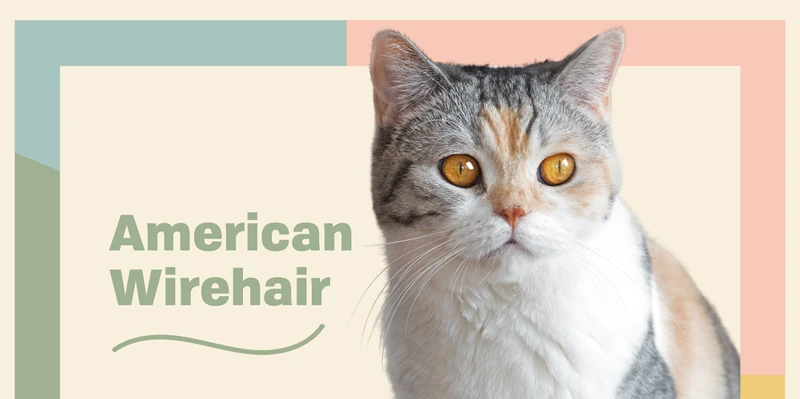
Feeding your American Wirehair cat can come with its own set of challenges. Sometimes, even the most attentive cat owner can encounter feeding issues that require a solution. This section will highlight some of the common feeding issues that you might experience with your American Wirehair cat and provide possible solutions to address these problems. So, if you are struggling with feeding issues, keep reading to learn about some solutions that can help you and your cat.
Overeating
It is not uncommon for American Wirehair cats to overeat, which can have serious health implications. Overeating can lead to obesity, diabetes, and other health conditions. If you notice that your American Wirehair is overeating, there are steps you can take to address the issue.
1. Control portions: One of the best ways to prevent overeating is to control your cat’s portions. Follow the recommended serving size for your cat’s food and use a measuring cup to ensure that you are not overfeeding.
2. Limit treats: Treats should be given in moderation, as they can add a significant number of calories to your cat’s diet. If your American Wirehair loves treats, consider using them as a reward for good behavior, such as using the litter box or coming when called.
3. Slow feeder bowls: Slow feeder bowls can help your American Wirehair eat more slowly, which can lead to feeling full faster. These bowls have raised ridges or obstacles that make it difficult for cats to eat their food quickly.
4. Scheduled feeding: Instead of allowing your cat to free-feed all day, consider feeding them on a schedule. This will help them establish a routine and prevent them from feeling hungry throughout the day.
5. Consult with a veterinarian: If you are concerned about your American Wirehair’s overeating, consult with a veterinarian. They can help you determine if there is an underlying medical condition that is causing your cat to overeat.
Ultimately, preventing overeating is all about establishing healthy habits and routines. By controlling portions, limiting treats, using slow feeder bowls, feeding on a schedule, and consulting with a veterinarian, you can help your American Wirehair maintain a healthy weight and avoid serious health issues.
Allergies/Sensitivities
Cats with allergies or sensitivities can experience a range of symptoms, including diarrhea, vomiting, and skin irritations. If you suspect your American Wirehair has a food allergy, it’s important to consult with your veterinarian before making any changes to their diet. Some common food allergens for cats include fish, dairy, and beef, although any ingredient can potentially cause a reaction.
Here are some tips for managing allergies or sensitivities in your American Wirehair:
- Elimination diet: Your veterinarian may recommend putting your cat on an elimination diet, in which they are fed a novel protein and carbohydrate source that they have not had before. This can help identify which ingredient(s) they are allergic or sensitive to.
- Limited ingredient diet: If your cat has a confirmed allergy or sensitivity, you may want to consider switching to a limited ingredient diet with high-quality protein and minimal additional ingredients. These diets are specifically formulated for cats with food allergies or sensitivities and can help reduce the likelihood of a reaction.
- Avoiding common allergens: If you know your cat has a specific food allergy, be sure to read ingredient labels carefully and avoid food that contains that ingredient. It’s also a good idea to avoid giving your cat table scraps or human food, which may contain ingredients that could cause a reaction.
- Speak to your veterinarian: If you suspect your cat has an allergy or sensitivity, it’s important to work with your veterinarian to develop a plan that works for your cat’s individual needs. They may recommend supplements or medications to help manage symptoms, or suggest additional tests to rule out other causes.
Managing allergies or sensitivities can be challenging, but with the right approach, you can help keep your American Wirehair happy and healthy.
Finicky Eaters
It’s not uncommon for American Wirehair cats to be finicky eaters. This can be frustrating for pet owners and can even lead to nutritional deficiencies if not addressed properly. Here are some tips for dealing with finicky eaters:
| Tip | Description |
|---|---|
| Offer a variety of flavors and textures | American Wirehair cats can quickly get bored with the same type of food day in and day out. Experiment with different flavors and textures to find what your cat likes best. |
| Try warming up the food | Some cats prefer their food warm, especially if it’s been refrigerated. Warming up the food can also help release more of the aroma, making it more enticing to your cat. |
| Offer canned food or treats | Some finicky eaters simply prefer wet food or treats over dry kibble. Experiment with different types of canned food and treats to see if your cat has a preference. |
| Feed smaller, more frequent meals | Some cats may not eat enough because they are overwhelmed by larger portion sizes. Try feeding smaller, more frequent meals throughout the day to encourage your cat to eat more. |
| Make mealtime more appealing | Try making mealtime more appealing by offering food in a different location or using an interactive feeder to make the meal more engaging. You can also try playing soothing music during mealtime to help relax your cat. |
It’s important to remember that some cats may have underlying medical issues that could affect their appetite. If your American Wirehair cat is consistently refusing food, it’s best to consult with your veterinarian to rule out any underlying health problems. By being patient and experimenting with different feeding methods and strategies, you can help your finicky eater get the nutrition they need to thrive.
Alternative Feeding Methods
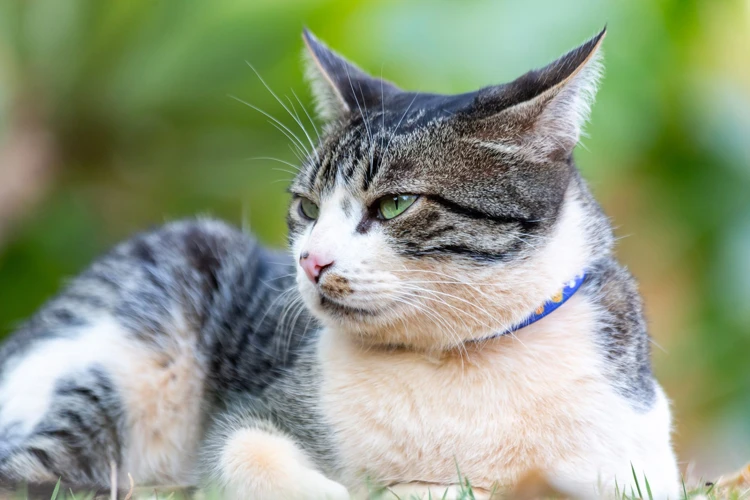
When it comes to feeding your American Wirehair cat, there are various methods you can use. Apart from traditional feeding techniques (dry, wet, raw, or home-cooked meals), alternative feeding methods are now becoming increasingly popular. These methods are meant to enhance your cat’s overall feeding experience while providing them with all the nutrients they need to thrive. In this section, we’ll discuss some of the alternative feeding methods and how they may work for your furry friend. So, let’s dive in!
Free-Feeding
Free-feeding is a common feeding method where dry food is kept out for the cat to eat at their leisure. This method is convenient if you have a busy schedule or aren’t home all day to feed your American Wirehair. However, it’s important to monitor how much your cat is eating and adjust the amount of food accordingly to prevent obesity.
The Pros of Free-Feeding:
- Convenient for owners with busy schedules.
- Allows cats to eat whenever they feel hungry.
- Helps prevent anxiety and stress related to food scarcity.
The Cons of Free-Feeding:
- Can lead to overeating and obesity.
- Cats may not get the correct portions of food they need for their individual dietary requirements.
- May attract insects or pests if not cleaned regularly.
If you choose to free-feed your American Wirehair, it’s important to invest in a quality automatic feeder and choose high-quality kibble that meets their nutritional needs. It’s also essential to monitor your cat’s weight and adjust their portions as necessary. Additionally, be sure to clean the feeder regularly to prevent the growth of bacteria or other harmful microbes.
Scheduled Feeding
Scheduled feeding is a method of feeding your American Wirehair cat at specific times throughout the day. This approach can help regulate a cat’s appetite and prevent overeating. Scheduled feeding also allows pet owners to monitor their cat’s food intake and ensure they are receiving the appropriate portion sizes for their age and activity level.
Benefits of Scheduled Feeding:
- Prevents overeating and obesity in cats.
- Can help regulate a cat’s digestive system and prevent gastrointestinal issues such as bloating, diarrhea, and constipation.
- Allows pet owners to monitor their cat’s food intake and ensure they are receiving the appropriate portion sizes.
- Can help establish a routine for your cat, reducing stress and anxiety in their daily life.
- May improve your cat’s behavior and training, as scheduled feeding can be used as a reward during training exercises.
How to Implement Scheduled Feeding:
- Determine how many meals per day your American Wirehair cat should be consuming based on their age and activity level. Typically, adult cats should be fed two meals per day, while kittens may require more frequent feedings.
- Choose a specific time for each meal and stick to it. Consistency is key for establishing a routine for your cat.
- Measure out the appropriate portion size for each meal. Your veterinarian can recommend the appropriate amount based on your cat’s individual needs.
- Offer your cat their meal at the designated time. If they don’t finish their meal within 30 minutes, remove the food to prevent overeating.
- Provide fresh water at all times, particularly during mealtime.
Potential Challenges of Scheduled Feeding:
- Some cats may struggle with adjusting to a schedule and may beg or meow for food outside of designated meal times.
- Cats may become accustomed to eating a certain amount at specific times and may refuse to eat outside of those times, which can be challenging if you need to change your cat’s feeding schedule.
Scheduled feeding is a beneficial method for feeding your American Wirehair cat and can help maintain their health and well-being. However, it’s important to monitor your cat’s behavior and adjust the feeding schedule accordingly if necessary.
Interactive Feeders
Interactive feeders are a type of feeding method that incorporates fun and playtime into mealtime for your American Wirehair. These feeders are designed to stimulate your cat’s mind and keep them entertained during mealtime, which can help reduce overeating and encourage slower eating habits.
Benefits of Interactive Feeders:
- Prevent overeating: Interactive feeders help slow down your cat’s eating pace by making them work for their food, which can prevent overeating and reduce the risk of obesity.
- Mental stimulation: These feeders provide mental stimulation for your cat, which can help reduce boredom and anxiety, and promote overall mental wellbeing.
- Enhance natural instincts: Interactive feeders are designed to mimic natural foraging behavior, which can help satisfy your cat’s natural instincts and promote their hunting skills.
- Fun activity: Mealtime with an interactive feeder can be a fun activity for your cat, providing them with a source of entertainment and enrichment.
Types of Interactive Feeders:
- Puzzle feeders: These feeders require your cat to solve puzzles to release the food. They come in a range of difficulties, from simple to complex, and can be a great way to challenge your cat’s mind.
- Snack balls: These are hollow balls with openings that dispense food when rolled. Your cat must roll and manipulate the ball to release the food, which can keep them entertained for longer during mealtime.
- Lick mats: These feeders are flat mats with small ridges that allow your cat to lick the food off. They are a great way to promote slower eating habits, and they can be a calming and satisfying activity for your cat.
- Slow feeders: These feeders are designed to slow down your cat’s eating pace by making it more difficult for them to access their food. They can be in the form of puzzle bowls or mats that have ridges and obstacles to navigate around.
Tips for Using Interactive Feeders:
- Introduce the feeder gradually: Some cats may be hesitant to use an interactive feeder at first, so it’s important to introduce it gradually and allow them to get comfortable with the feeder over time.
- Monitor food intake: While interactive feeders can help prevent overeating, it’s important to still monitor your cat’s food intake and ensure they are getting the appropriate amount of food for their needs.
- Cleanliness: Make sure to clean the feeder thoroughly after each use to prevent the buildup of bacteria or mold.
- Supervision: Always supervise your cat during mealtime with an interactive feeder to ensure they are using it safely and not becoming frustrated or agitated.
Interactive feeders can be a great addition to your American Wirehair’s feeding routine, providing mental stimulation and promoting slower eating habits. There are a variety of options to choose from, and by following the tips above, you can ensure your cat has a safe and enjoyable mealtime experience.
Feeding Tips for American Wirehair Cats
When it comes to feeding your American Wirehair cat, it’s important to not only consider their dietary needs but also their feeding habits and preferences. With a variety of feeding options available, it can be overwhelming to determine the best approach. In this section, we’ll provide some tips and tricks to help ensure your feline friend is getting the nutrition they need while also enjoying mealtime. From portion control to creating a comfortable mealtime environment, we’ll cover all the important factors to keep in mind.
Portion Control
Maintaining a healthy weight is essential for the overall well-being of your American Wirehair cat, and portion control plays a crucial role in achieving this goal. Overfeeding your cat can lead to obesity and various health issues, while underfeeding can cause malnutrition and other complications. So, how do you determine the right portion size for your cat?
Factors that influence portion size
There is no one-size-fits-all answer to this question, as various factors can affect your cat’s daily food intake, such as:
| Factors | How they affect portion size |
|---|---|
| Age | Younger cats require more calories than senior cats due to their higher activity level and growth rate. |
| Weight | Overweight cats need to consume fewer calories than cats with a healthy weight to achieve weight loss, while cats with a low body weight require regular feeding to gain weight. |
| Activity level | Cats with high energy levels require more calories than inactive cats as they burn more calories throughout the day. |
| Health conditions | Cats with certain health conditions such as diabetes, kidney disease, or hyperthyroidism require special dietary considerations that affect their portion size. |
Calculating portion size
Once you’ve determined the factors affecting your cat’s portion size, you can use the following formula to calculate the amount of food your cat needs per day:
Amount of food (in ounces) = Cat’s weight (in pounds) x 0.4
For example, if your cat weighs 10 pounds, they would require 4 ounces of food per day. However, this is just a rough estimate, and you may need to adjust the portion size based on your cat’s individual needs.
Monitoring portion size
It’s essential to measure and monitor your cat’s food intake to ensure they’re not overeating or under-eating. Use a measuring cup or a kitchen scale to ensure you’re providing the right amount of food per meal. Also, remember that treats and table scraps count towards your cat’s daily calorie intake, so limit them accordingly.
By understanding your cat’s individual needs, calculating the right portion size, and monitoring their food intake, you can help your American Wirehair cat maintain a healthy weight and prevent various health issues.
Hydration
Keeping your American Wirehair cat hydrated is absolutely crucial to their overall health and well-being. Here are some tips on how to ensure that your cat gets enough water throughout the day:
- Provide fresh water daily: Make sure to fill your cat’s water bowl with fresh, clean water every day. Change the water if you notice any debris or if the water becomes stale.
- Use a water fountain: Some cats are more likely to drink from running water sources. A water fountain can provide a constant stream of water for your cat to drink from, encouraging them to stay hydrated.
- Add wet food to their diet: Wet food contains high levels of moisture, which can help keep your cat hydrated. Try incorporating some wet food into your cat’s diet.
- Offer ice cubes: Some cats enjoy licking ice cubes as a way to stay hydrated. Place a few ice cubes in your cat’s water bowl or on a plate, and see if they take to it.
- Monitor water intake: Keep an eye on how much water your cat drinks throughout the day. If you notice any significant changes in their water intake, it could be a sign of an underlying health issue.
Remember, it’s important to keep your American Wirehair cat hydrated in order to prevent medical issues that can be caused by dehydration, such as urinary tract infections and kidney disease. By following these simple tips and monitoring your cat’s hydration levels, you can help ensure that they stay healthy and happy.
Mealtime Environment
Creating a positive mealtime environment is crucial for your American Wirehair’s overall well-being. Here are some tips to help make mealtime a positive experience for your feline friend:
- Quiet and Peaceful: Ensure that your cat’s feeding area is free from any loud noises or distractions that may cause stress. Choose a quiet and peaceful area for mealtime to help your cat feel relaxed.
- Clean and Tidy: Keep your cat’s feeding area clean and tidy to promote good hygiene. Make sure that food and water bowls are washed and refilled regularly to prevent bacteria from growing that can cause illness.
- Comfortable: Provide a comfortable and inviting space for your cat to eat. A soft mat or rug may encourage your cat to spend more time in their feeding area.
- Separate Feeding Areas: If you have more than one cat in your home, provide separate feeding areas for each cat. Cats are solitary hunters by nature and may feel stressed or anxious while sharing their food with others.
- Positive Reinforcement: Reward your cat with praise and affection for good behavior during mealtime. This can help them associate mealtime with positive experiences and ensure that they enjoy their food.
- Avoid Distractions: Make sure that your cat’s feeding area is free from any distractions such as toys or other pets that may cause them to lose focus on their food. This can help your cat stay focused on their meal and prevent overeating.
By implementing the tips listed above, you can create a positive mealtime environment for your American Wirehair cat, ensuring they stay happy, healthy and content.
Conclusion
In conclusion, choosing the best feeding method for your American Wirehair requires reflection and thorough consideration. Before making a decision, evaluate your cat’s individual needs, such as age, activity level, and health conditions. By analyzing their unique nutritional requirements, you’ll be better able to choose a feeding method that will promote their overall well-being.
Regardless of which feeding method you choose, it’s important to be mindful of common feeding issues, such as overeating and allergies, as well as alternative feeding methods, including interactive feeders and scheduled feeding. By using proper portion control, ensuring that your cat stays hydrated, and providing a comfortable mealtime environment, you can help foster healthy eating habits for your feline friend.
In the end, every cat is different and may have varying preferences when it comes to food. Therefore, it’s essential to experiment with different feeding methods and be patient in finding the right one for your American Wirehair. With the right approach and a little trial and error, you can provide your cat with a nutritious and satisfying diet that supports their unique needs.
Frequently Asked Questions
1. Can American Wirehair cats eat human food?
Some human foods are safe for cats to eat in moderation, such as cooked meat and vegetables. However, it’s important to avoid foods that are toxic to cats, such as chocolate and onions.
2. How often should I feed my American Wirehair cat?
It’s recommended to feed adult cats twice a day, while kittens may require more frequent meals. However, consult with your veterinarian for specific feeding recommendations for your cat’s age and activity level.
3. Is feeding a raw diet safe for American Wirehair cats?
A raw diet can be healthy for cats if it’s properly balanced and prepared. However, it may increase the risk of bacterial contamination and should only be done with caution and a veterinarian’s guidance.
4. What should I do if my American Wirehair cat is a picky eater?
Try offering different types of food, such as different brands or flavors of wet or dry food. You can also try adding a food topper or feeding smaller, more frequent meals throughout the day. Consult with your veterinarian if your cat is consistently refusing to eat.
5. How can I prevent my American Wirehair cat from overeating?
Feeding controlled portion sizes and avoiding free-feeding can help prevent overeating. Additionally, providing enough physical and mental stimulation for your cat can help reduce the likelihood of boredom eating.
6. Are there any specific health conditions that affect American Wirehair cats’ diets?
American Wirehair cats may have a higher risk of urinary tract issues, which can be managed through feeding a specialized diet prescribed by their veterinarian.
7. Should I give my American Wirehair cat supplements?
It’s best to consult with your veterinarian before giving any supplements to your cat. Some supplements, such as certain vitamins or oils, can be beneficial in moderation, while others can be harmful if overused.
8. Can American Wirehair cats drink cow’s milk?
Cow’s milk can upset a cat’s stomach and cause diarrhea or vomiting. It’s best to offer your cat plain, fresh water for hydration.
9. Should I feed my American Wirehair cat a grain-free diet?
There is no evidence that grain-free diets are inherently better for cats. In fact, some grain-free diets may actually be lacking in important nutrients. Consult with your veterinarian for specific dietary recommendations for your cat.
10. Can I feed my American Wirehair cat a vegetarian or vegan diet?
Cats are obligate carnivores and require animal protein in their diets. A vegetarian or vegan diet can be dangerous for cats and may lead to nutrient deficiencies and health issues.

